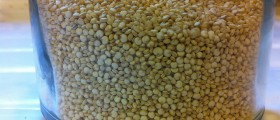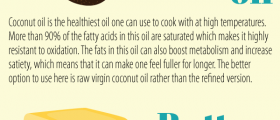
Wheat is one of the most important foods for the human use and it has been so for thousands of years. It is a storehouse of alimentative values and it is probably the most important crop in the world. Wheat germ, however, is the part of wheat that preserves all the fantastic nutritional benefits of this plant, even though it is usually neglected in mass manufacturing.
What is wheat germ
The germ is located in the kernel, which is in the center of the wheat grain. The germ is basically a fetus from which a new plant will grow. Although it makes only a small part of the grain, wheat germ is its most nutritious part. Unfortunately, the germ is discarded in the process of wheat manufacture so in most cases people do not enjoy its benefits. However, the germ is well preserved in both whole wheat and whole wheat flour and its products. There are also wheat germ flakes which can be consumed raw or toasted, and many manufacturers fortify white flour with nutrients obtained from ground wheat germ.
Wheat germ nutritional value and health benefits
Just one cup of wheat germ satisfies 20 percent of the daily carbohydrate requirement, and 61 percent of the recommended intake of dietary fiber.
A cup of roasted wheat germs, which have pleasant nutty and sweet taste, contains 7.48 grams of polyunsaturated fats and 1.695 grams of monounsaturated fats. These fats are important for nice looking and healthy skin, and more importantly, they regulate the cholesterol levels, thus improving cardiovascular health and preventing the related diseases.
The same amount contains 2 percent of vitamin A daily value and 11 percent of vitamin C. but when it comes to vitamins, the real value of wheat germ is in its extraordinary content of all the vitamins of the B complex. It also contains vitamin E, which is a powerful antioxidant that repairs the damage caused by free radicals.
Wheat germ is a great source of minerals too. It is particularly rich in phosphorus, zinc, magnesium, copper, iron, potassium and calcium.
Selenium, which is found in wheat germs, is believed to be able to expel carcinogenic agents and elements that penetrate the body through alimentation and pollution.
Wheat germ is one of the best possible sources of omega-3 essential fatty acids. These acids cannot be produced in the body so they need to be included in the diet. They have many health benefits, including memory improvement, good heart health and normal blood pressure.
Since it contains lutein and zeaxanthin, wheat germ is important for good macular health.
Wheat germ can be used as a bread crumb substitute, a healthy and delicious additive to smoothies, shakes, cakes, sauces, homemade protein bars and casseroles.

















Your thoughts on this
Loading...